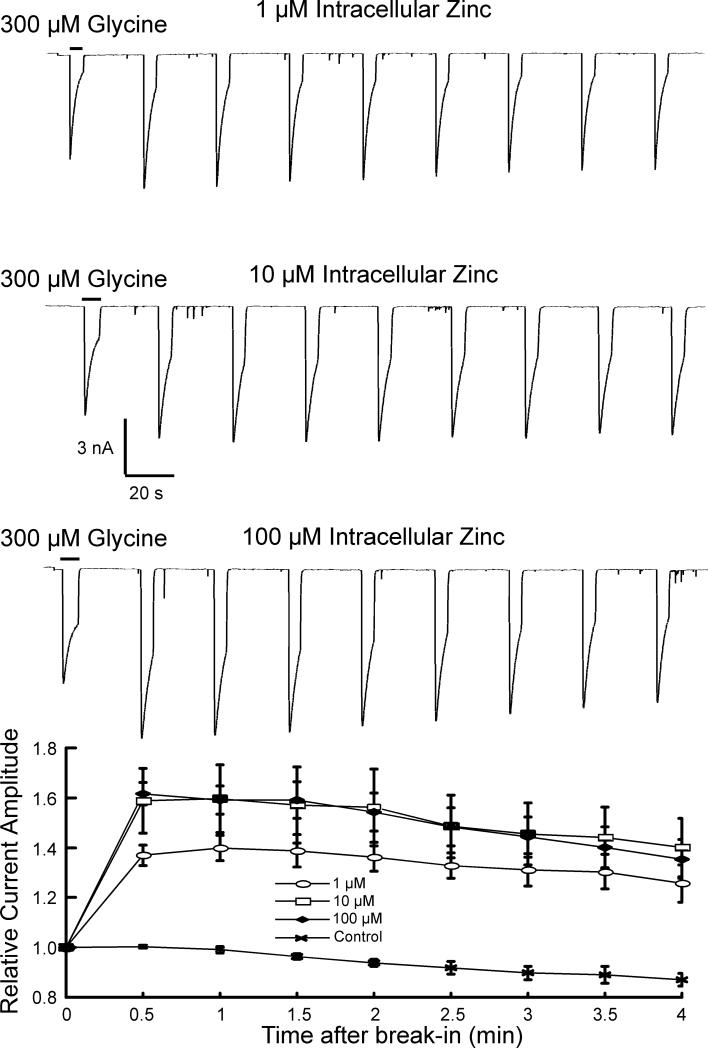Figure 7.
Intracellular zinc potentiates glycine-evoked currents. In contrast to examining the effect of intracellular access of extracellularly applied zinc, a range of concentrations (1, 10, 100 μM) of zinc in the recording electrode was used to directly examine the effects of intracellular zinc. The current evoked by 300 μM glycine was recorded immediately after break-in and compared to currents recorded every 30 seconds for approximately 4 minutes. The peak glycine-evoked current increased and peaked at the 30-second time point with each zinc concentration and declined slightly over the subsequent 3.5 minutes.

